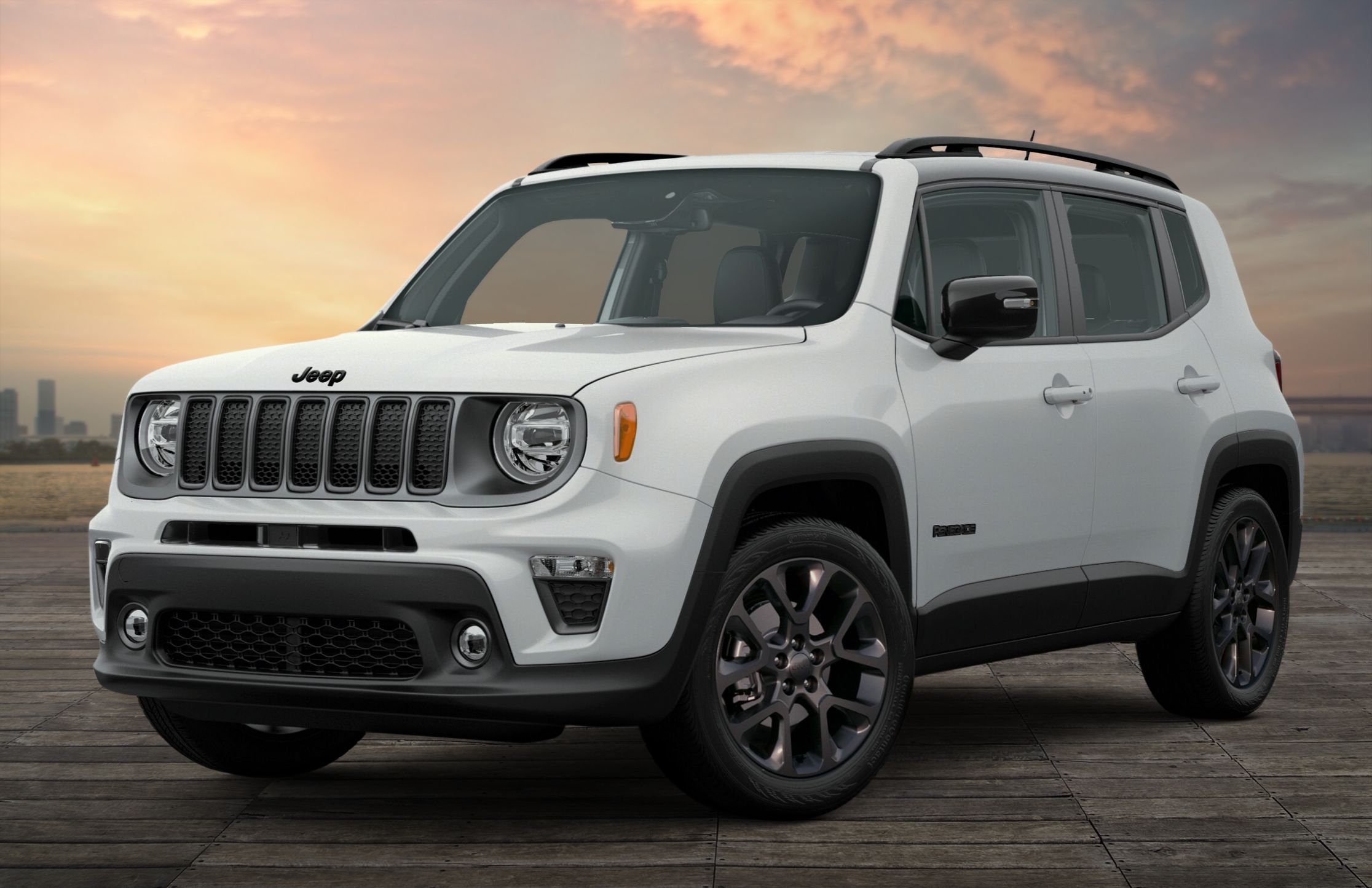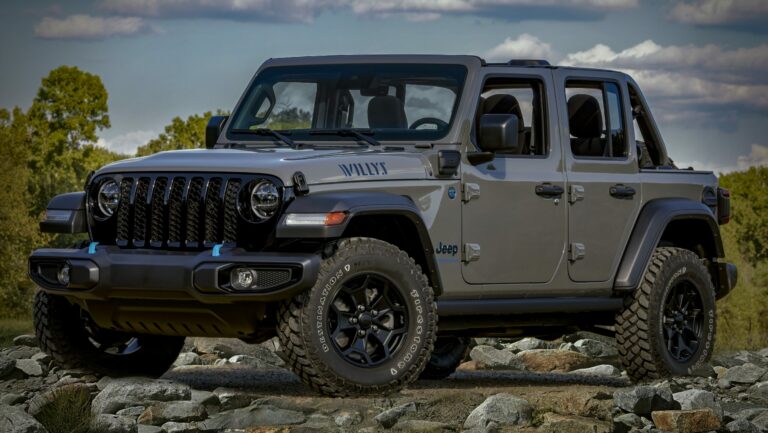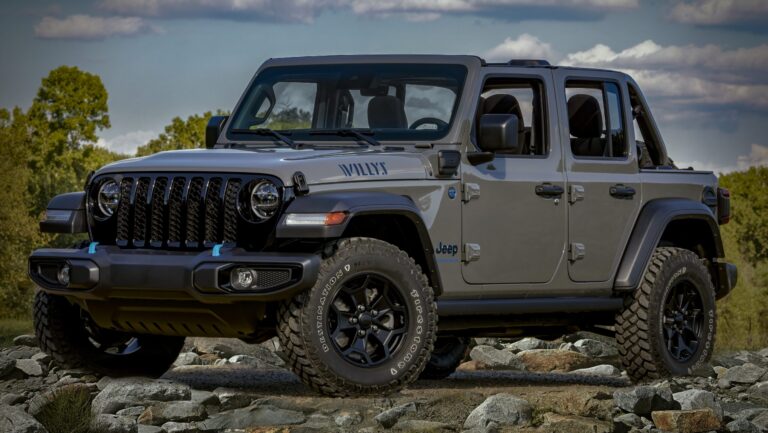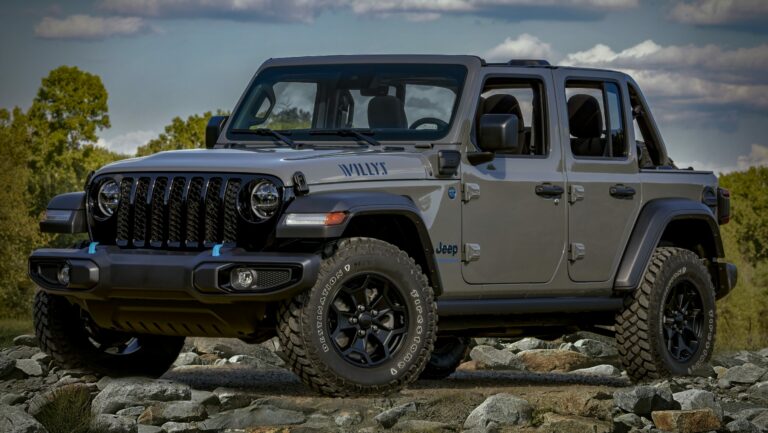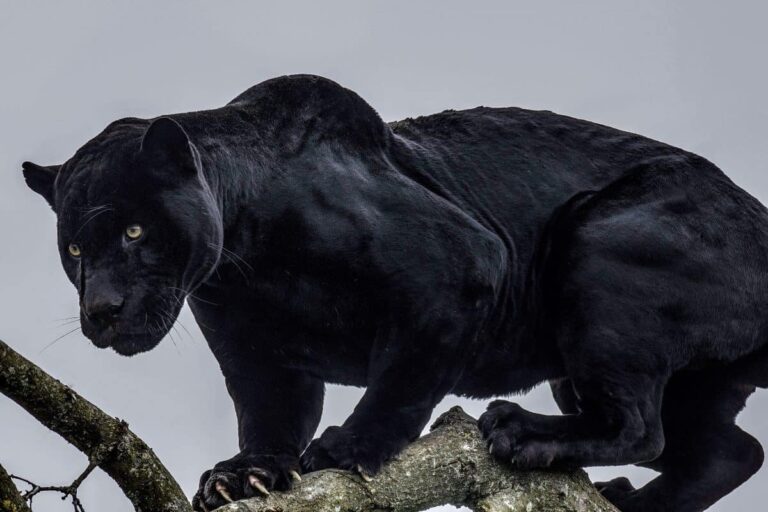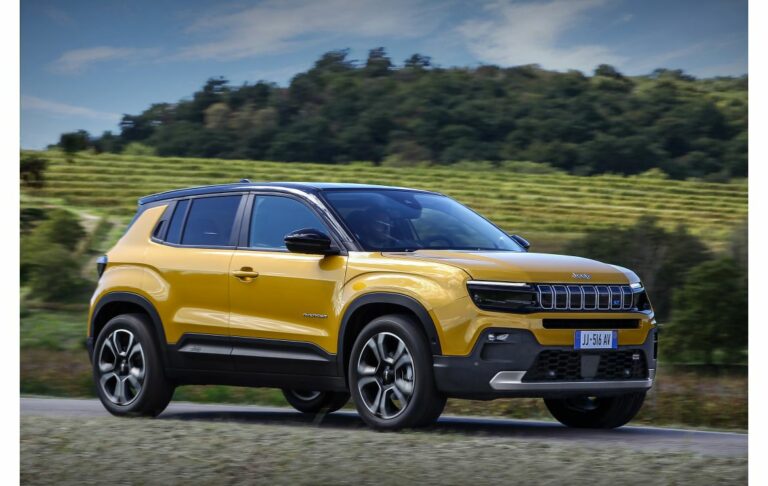Jeep Body For Sale: Your Ultimate Guide to Restoration, Customization, and Repair
Jeep Body For Sale: Your Ultimate Guide to Restoration, Customization, and Repair jeeps.truckstrend.com
The iconic silhouette of a Jeep isn’t just about its engine or drivetrain; it’s about the rugged, unmistakable body that defines its character. For enthusiasts, restorers, and off-road builders, finding a "Jeep Body For Sale" can be the cornerstone of an exciting project. Whether you’re resurrecting a rust-eaten classic, repairing significant accident damage, or embarking on a custom build that pushes the boundaries of off-road capability, the availability of a replacement Jeep body opens up a world of possibilities. This comprehensive guide will navigate the intricacies of sourcing, evaluating, and ultimately acquiring the perfect body for your beloved Jeep.
Why Buy a Jeep Body? The Core Motivations
Jeep Body For Sale: Your Ultimate Guide to Restoration, Customization, and Repair
The decision to purchase a standalone Jeep body often stems from a specific need or a grand vision. Understanding these motivations highlights the importance and relevance of the "Jeep Body For Sale" market:
- Rust Restoration: This is arguably the most common reason. Older Jeeps, particularly those exposed to harsh climates or saltwater, are notorious for body rust. When the frame is solid but the tub, fenders, and floorboards are compromised, a new or good-condition used body offers a viable path to bring the vehicle back to life without the arduous, often more expensive, process of extensive sheet metal fabrication.
- Accident Damage Repair: Significant impacts can warp or tear body panels beyond economical repair. A replacement body can be a faster and more cost-effective solution than piecing together multiple repair panels, ensuring proper alignment and structural integrity.
- Custom Builds and Off-Road Buggies: For serious off-roaders, a bare Jeep body provides a lightweight starting point for a purpose-built crawler or trail rig. Stripping away unnecessary components and reinforcing key areas allows for extreme customization, often paired with an upgraded frame and drivetrain.
- Upgrading Older Models: Sometimes, enthusiasts want to update the aesthetics of an older Jeep while retaining its classic charm or specific drivetrain. Swapping an older, worn body for a newer, well-preserved one can refresh the vehicle’s appearance and provide a solid foundation for further modifications.
- Saving a Frame: In cases where a rare or desirable Jeep frame is in excellent condition but the body is beyond repair, sourcing a new body becomes the logical step to preserve the vehicle’s heritage.

Types of Jeep Bodies Available
The market for Jeep bodies is diverse, offering options for various models, conditions, and project budgets.
- New OEM/Aftermarket Replacement Bodies: These are brand-new body tubs, often bare (without doors, fenders, hood) or as complete kits. Companies like Omix-ADA, Crown Automotive, and various others produce high-quality steel or sometimes fiberglass reproduction bodies that are designed to fit original frames. These are ideal for full restorations where authenticity and longevity are paramount.
- Used/Salvage Bodies: Sourced from wrecked Jeeps, donor vehicles, or parts cars, used bodies can be a more budget-friendly option. Their condition varies wildly, from minor cosmetic damage to significant structural issues. Careful inspection is crucial for these finds.
- Bare Tubs vs. Complete Body Kits:
- Bare Tub: This is just the main passenger compartment shell, often including the cowl, windshield frame mounting points, and rear wheel wells. It’s the core of the body.
- Complete Body Kits: These usually include the bare tub along with new or used doors, fenders, hood, and tailgate. They offer a more comprehensive solution, reducing the need to source individual panels.
- Specific Jeep Models: Bodies are available for a wide range of Jeep models, each with its unique characteristics and demand:
- CJ Series (CJ-2A, CJ-3A, CJ-5, CJ-7, CJ-8 Scrambler): Highly sought after for classic restorations. Aftermarket new tubs are common.
- Wrangler YJ (1987-1995): Known for its square headlights.
- Wrangler TJ (1997-2006): Popular for its coil spring suspension.
- Wrangler JK (2007-2018): Modern and widely available.
- Wrangler JL (2018-Present): Newer, so used bodies are less common but available from accident vehicles.
- Older Models (MB, GPW): Rare and highly valuable, often requiring specialized sourcing.


Where to Find a Jeep Body For Sale
Locating the right Jeep body requires patience and knowing where to look.
- Online Marketplaces:
- eBay: A vast selection of new and used parts, including full bodies and individual panels. Be wary of shipping costs for large items.
- Craigslist/Facebook Marketplace: Excellent for local finds, allowing you to inspect the body in person and avoid expensive shipping. Use specific search terms like "Jeep CJ7 tub" or "Wrangler TJ body."
- Dedicated Jeep Forums & Classifieds: Websites like JeepForum.com, Pirate4x4.com, and specific model forums often have "For Sale" sections where enthusiasts list parts.
- Specialty Retailers & Aftermarket Manufacturers:
- Quadratec, Morris 4×4 Center, Summit Racing, 4 Wheel Parts: These major retailers carry new aftermarket body tubs and panels from manufacturers like Omix-ADA and Crown Automotive.
- Direct from Manufacturers: Some companies specialize in reproduction Jeep bodies and sell directly.
- Salvage Yards/Auto Recyclers: Often overlooked, local junkyards can be treasure troves. Call ahead to inquire about specific Jeep models they might have in stock. Be prepared to remove the body yourself or arrange for removal.
- Jeep Swap Meets & Events: Attending local and national Jeep shows and swap meets can lead to unexpected finds and opportunities to network with other enthusiasts.
What to Look For When Buying: Important Considerations and Tips
Purchasing a Jeep body is a significant investment in time and money. Careful inspection and informed decision-making are paramount.
- Rust: The Ultimate Enemy: This is your primary concern.
- Common Rust Spots: Floor pans (especially under the seats and footwells), cowl (where the windshield mounts), door sills, rear quarter panels, fender wells, and body mounts where the tub attaches to the frame.
- Inspection: Use a magnet to check for bondo or thick filler. Tap with a hammer (gently!) to listen for thin or rusted-through spots. Look for bubbling paint, which often indicates underlying rust.
- Accident Damage:
- Structural Integrity: Check for kinks, creases, or warping in the main body structure. Look at the door gaps and ensure they are even.
- Previous Repairs: Be wary of poor bodywork, excessive bondo, or signs of frame damage if the body is still attached to one.
- Completeness and Condition:
- Bare Tub vs. Complete: Clarify exactly what’s included. Does it come with doors, a hood, fenders, tailgate, windshield frame, or just the main tub?
- Accessories: Are there any interior components, wiring harnesses, or dash parts included? These can add significant value.
- Overall Condition: Assess the general state of the metal. Is it straight? Are there many dents or dings that will require extensive bodywork?
- Title/VIN (if applicable): If you’re buying a body that’s still considered a "vehicle" or has a VIN attached, ensure the seller has a clear title. For bare tubs, a VIN is usually not a concern as the VIN is typically on the frame. However, understanding the body’s provenance is always good.
- Shipping and Transportation: Jeep bodies are large and heavy.
- Logistics: How will you transport it? Do you need a flatbed trailer or professional freight shipping?
- Cost: Shipping can add hundreds, even thousands, to the total cost. Factor this into your budget upfront. Local pickups are always preferred.
- Price vs. Condition: A cheaper body might require extensive rust repair and bodywork, potentially making it more expensive in the long run than a slightly more expensive but cleaner option. Balance the upfront cost with the estimated time and money for restoration.
The Process of Replacing a Jeep Body: A Glimpse into the Project
Swapping a Jeep body is a significant undertaking, often requiring a dedicated workspace, tools, and a good understanding of automotive mechanics. While a full "how-to" is beyond this article’s scope, here’s an overview of the key steps and challenges:
- Preparation: Document everything! Take photos, label wires, bolts, and small parts as you remove them. Gather necessary tools (wrenches, sockets, body lifts, plasma cutter/grinder if dealing with seized bolts).
- Disassembly: Carefully disconnect all wiring, fuel lines, brake lines, steering components, and anything else connecting the body to the frame. Remove seats, carpet, and interior components. Unbolt the body mounts.
- Lifting the Old Body: This usually requires a lift, engine hoist, or a few strong friends. Safety is paramount.
- Frame Inspection and Repair: With the old body off, thoroughly inspect the frame for rust, cracks, or bends. This is the ideal time to clean, paint, and even reinforce the frame. Replace old body mount bushings.
- Body Prep: For a new body, minor prep and paint may be needed. For a used body, extensive rust repair, dent removal, and surface preparation are likely required before painting. Apply an undercoating for long-term protection.
- Mounting the New Body: Carefully lower the new body onto the frame, ensuring proper alignment with the body mounts.
- Reassembly: Reconnect all wiring, lines, and components in reverse order. This is often the most time-consuming part, especially with older, complex wiring harnesses.
Challenges: Seized bolts, rusted components, complex wiring diagrams, achieving proper body alignment, and unexpected discoveries (more rust!). It’s a project that tests patience and problem-solving skills.
Cost Implications and Budgeting
The cost of a Jeep body for sale varies dramatically based on model, condition, and whether it’s new or used. Here’s a general breakdown of factors influencing the overall budget:
- Body Purchase Price: This is the most significant variable.
- Shipping/Transportation: Can add several hundred to over a thousand dollars.
- Rust Repair Materials/Labor: If buying a used body, anticipate costs for patches, welding supplies, or professional body shop labor.
- Paint and Bodywork: Professional paint jobs are expensive. DIY painting can save money but requires skill and equipment.
- New Hardware: Body mounts, bolts, clips, seals, weatherstripping. These small items add up quickly.
- Unexpected Issues: Always budget an extra 10-20% for unforeseen problems.
Jeep Body For Sale: Estimated Price Table
Please note: These prices are highly generalized and can vary significantly based on condition, seller, location, and market demand. New aftermarket bodies tend to have more stable pricing, while used bodies fluctuate wildly.
| Jeep Model/Body Type | Condition | Description | Estimated Price Range (USD) |
|---|---|---|---|
| CJ-7/CJ-8 Scrambler Tub | New Aftermarket | Bare steel tub, ready for prep/paint. High-quality reproduction. | $3,500 – $6,000+ |
| CJ-7/CJ-8 Scrambler Tub | Used | Good condition, minor surface rust, some dents. Requires bodywork/paint. | $800 – $2,500 |
| Wrangler YJ Tub | New Aftermarket | Bare steel tub. | $2,800 – $4,500 |
| Wrangler YJ Tub | Used | Decent shape, minimal rust but likely needs minor repairs/paint. | $500 – $1,500 |
| Wrangler TJ Tub | New Aftermarket | Bare steel tub. | $3,000 – $5,000 |
| Wrangler TJ Tub | Used | Good to fair condition, some surface rust or minor dents. | $700 – $2,000 |
| Wrangler JK 2-Door Body | Used | From accident vehicle, generally good condition, may have minor damage. | $1,500 – $3,500 |
| Wrangler JK 4-Door Body | Used | From accident vehicle, generally good condition, may have minor damage. | $2,000 – $4,500 |
| Individual Panels | New Aftermarket | Fenders, doors, hoods (e.g., for CJ/YJ/TJ) | $200 – $800 per panel |
| Individual Panels | Used | Fenders, doors, hoods (e.g., for CJ/YJ/TJ). Condition varies. | $50 – $400 per panel |
| Bare MB/GPW Tub | New Aftermarket | High-quality reproduction for WWII-era Jeeps. | $4,000 – $7,000+ |
| Bare MB/GPW Tub | Used | Original, potentially very rough, requires extensive restoration. Rare find. | $1,000 – $5,000+ |
Frequently Asked Questions (FAQ) About Jeep Bodies For Sale
-
Q: Is it legal to swap a Jeep body?
A: Yes, in most jurisdictions, swapping a body is legal as long as the vehicle’s VIN (which is typically on the frame) remains intact and matches the title. The body itself usually doesn’t have a VIN that dictates the vehicle’s identity. Always check your local DMV regulations. -
Q: Do new aftermarket Jeep bodies come painted?
A: Generally, no. New aftermarket bodies are typically shipped in bare steel with an e-coat or primer, requiring full preparation and paint by the buyer. -
Q: Can I put a TJ body on a YJ frame (or other cross-model swaps)?
A: While technically possible with significant fabrication, it’s rarely a direct bolt-on. Frame dimensions, body mount locations, and drivetrain clearances often differ, requiring custom mounts, steering shaft modifications, and extensive wiring adaptation. It’s a project for advanced builders. -
Q: How long does a Jeep body swap take?
A: This varies wildly based on experience, tools, and the condition of the donor/recipient vehicle. A well-equipped professional shop might do it in a few weeks, while a DIY enthusiast could spend several months to a year or more working evenings and weekends. -
Q: Is buying a used body worth it, or should I always go new?
A: It depends on your budget, skill level, and desired outcome. A used body can save significant money upfront but may require more time and expense for rust repair and bodywork. A new body offers a fresh start with minimal bodywork but comes at a higher initial cost. -
Q: What tools are essential for a body swap?
A: Basic hand tools (wrenches, sockets), a body lift or engine hoist, floor jacks, jack stands, cutting tools (grinder, plasma cutter for seized bolts), welding equipment (if repairing rust), and an air compressor for pneumatic tools are highly recommended.
Conclusion
The phrase "Jeep Body For Sale" represents more than just a piece of metal; it’s an invitation to a challenging yet incredibly rewarding project. Whether you’re embarking on a meticulous restoration to preserve a piece of automotive history, repairing the aftermath of an unfortunate accident, or custom-building the ultimate off-road machine, a new or used Jeep body provides the canvas for your vision. By understanding the types of bodies available, knowing where to source them, diligently inspecting potential purchases, and preparing for the complexities of a body swap, you can confidently navigate this exciting segment of the Jeep aftermarket and bring your dream build to life. The journey may be arduous, but the satisfaction of seeing your revitalized or custom-built Jeep on the road or trail will be an unparalleled reward.

